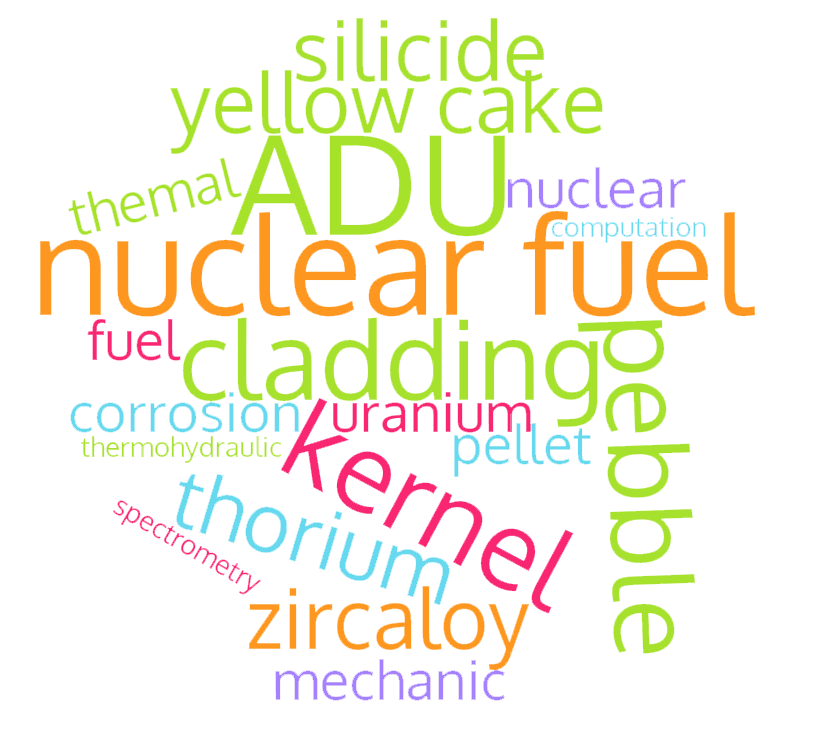ANALISIS MIKROSTRUKTUR DAN KIMIA TERHADAP HASIL KOROSI PADA INGOT AlFeNiMg
DOI: http://dx.doi.org/10.17146/urania.2013.19.2.1770
Sari
ABSTRAK
ANALISIS MIKROSTRUKTUR DAN KIMIA TERHADAP HASIL KOROSI PADA INGOT
AlFeNiMg. Mikrostruktur dan komposisi kimia sangat berpengaruh terhadap ketahanan korosi
paduan aluminium. Dalam penelitian ini telah dilakukan analisis mikrostruktur dan komposisi
kimia pada hasil korosi ingot AlFeNiMg. Bahan yang digunakan adalah ingot paduan AlFeNi yang
telah ditambah dengan Mg, dengan komposisi unsur pemadu 1% berat Fe, 1% berat Ni dan 1%
berat Mg. Ingot dipanaskan dalam tungku pada temperatur 500oC selama 1 jam kemudian
didinginkan dengan cepat dalam air dan dianil pada temperatur 500oC selama 1,5 jam. Paduan
ALFeNiMg hasil perlakuan panas selanjutnya dilakukan uji korosi dalam autoclave dengan
variasi temperatur 75oC, 125 oC , 175 oC dan waktu uji 9 hari (216 jam), 18 hari (432 jam) dan 27 hari (648 jam). Sampel hasil uji korosi dilakukan uji metalografi (mikroskop optik, SEM) serta
analisis komposisi kimia menggunakan alat SEM-EDS. Hasil analisis mikrostruktur menunjukkan
bahwa pada temperatur uji korosi 75oC, 125oC dan 175oC dengan rentang waktu 216 – 648 jam
terjadi peningkatan lapisan oksida (korosi) mengikuti korelasi parabolik, dengan persamaan
masing-masingh = 0,008 x0,8846 untuk temperatur uji 75oC; h = 1 x 10-6t2 – 0,0007t + 4,1 untuk temperatur uji 125oC dan h = -2 x 10-5t2 + 0,0227t + 2,3 untuk temperatur uji 175 oC, dengan h adalah tebal lapisan dalam μm dan t adalah waktu uji korosi dalam jam. Temperatur uji korosi 125 oC dengan rentang waktu 216 – 648 jam pada paduan menunjukkan sifat paduan AlFeNiMg yang stabil dengan terbentuknya lapis lindung oksida di permukaan logam sangat kompak dan bisa berfungsi sebagai penghambat proses korosi selanjutnya. Dari hasil analisis kimia diperoleh informasi bahwa unsur Fe dan Ni pada logam paduan AlFeNiMg, lebih cenderung membentuk senyawa fasa kedua Al9FeNi, Al3Fe dan Al3Ni. Sedangkan unsur Mg dan Al membentuk senyawa oksida dan hidroksida, dan peran unsur Mg lebih besar dalam membentuk lapis lindung oksida yang stabil, homogen, padat dan kompak.
Kata kunci: Paduan Al, AlFeNiMg, Kimia mikro, Lapis lindung oksida logam.
ABSTRACT
MICROSTRUCTURE AND CHEMICAL ANALYSIS OF CORROSION ON AlFeNiMg INGOT.
Microstructure and chemical composition affect the corrosion resistance of aluminum alloys. In
this study an analysis was done on the microstructure and chemical composition of corrosion
resulted on AlFeNiMg ingot. The material used in this research is AlFeNi alloy ingot that has been augmented by Mg with alloying elements composition of 1 wt% Fe, 1 wt% Ni and 1 wt% Mg. Ingot was heated at a temperature of 500 oC for 1 hour and cooled quickly in water and annealed at a temperature of 500 oC for 1.5 hours. The heat treated ALFeNiMg alloy was further corrosion tested with an autoclave at a temperature variation of 75 oC, 125 oC, 175 oC for 9 days (216 hours), 18 days (432 hours) and 27 days (648 hours) respectively. The corrosion result was prepared for metallographic examination (optical microscopy, SEM) and chemical composition analysis using SEM - EDS. The microstructure examination shows that the corrosion test temperature of 75 oC, 125 oC and 175 oC with a time span of 216-648 hours results in an increase in the oxide layer (corrosion, following a parabolic correlation: h = 0.008 x0.8846for the corrosion temperature of 75 oC, h = 1 x 10-6t2 – 0.0007t + 4.1 for the corrosion temperature of 125 oC and h = -2 x 10-5t2+ 0.0227t + 2.3 for the corrosion temperature of 175 oC, where h is the layer thickness in μm and t is corrosion test time in hour. It is also studied that the corrosion test temperature of 125 oC with a time span of 216-648 hours exhibits stable properties of the AlFeNiMg alloy, which is protected by oxide layer on the surface. The layer is very compact and can serve as a barrier against further corrosion process. The chemical analysis shows that the elements of Fe and Ni in AlFeNiMg alloy are more likely to form Al9FeNi of the second phase, Al3Fe and Al3Ni. The Mg and Al elements, on the other hand, tend to form Mg and Al oxides and hydroxides. Magnesium appears to have greater role in the formation of homogeneous, dense and compact protecting layers of stable oxides.
Keywords: Al Alloy, AlFeNiMg, micro chemistry, protecting metal oxide layer.
Teks Lengkap:
PDFRefbacks
- Saat ini tidak ada refbacks.
Penerbit: Pusat Riset Teknologi Bahan Nuklir dan Limbah Radioaktif
Diindeks oleh:









